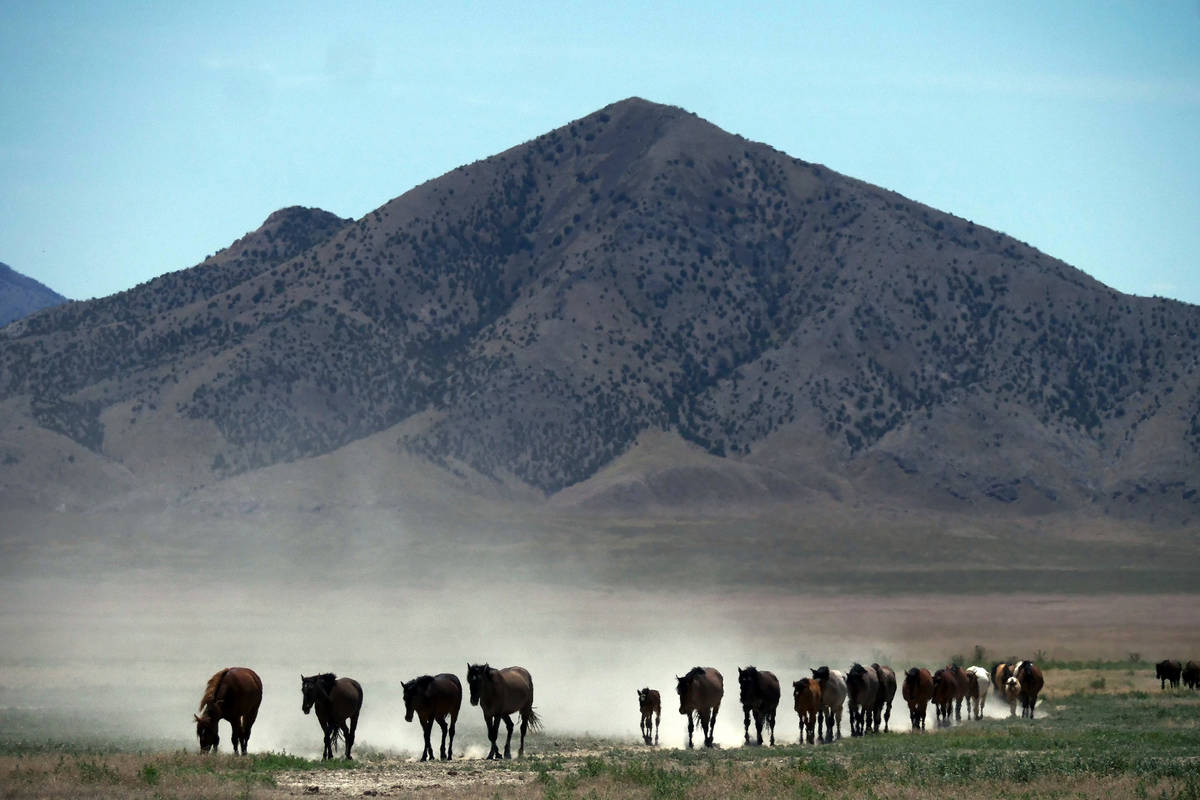COMMENTARY: Wild horse adoption program is ripe for corruption
The New York Times published an explosive investigation last month documenting how federally protected wild horses are being dumped at slaughter auctions shortly after they were “adopted” through a program run by the Bureau of Land Management.
The Adoption Incentive Program, established in 2019, pays individuals to take in untamed wild horses removed from the range ($1,000 per horse) as long as they promise not to sell the animals for slaughter. The federal agency has touted the program as a success, noting the “significant increase in the number of animals placed into good homes.”
According to the Times, however, one adoptive family received more than $20,000 in taxpayer funds to essentially flip wild horses, ditching them at auctions known to be frequented by kill-buyers who then transport the animals to slaughterhouses in Canada and Mexico. In another troubling case, the BLM paid an adopter who had previously been sent to prison for kidnapping and assaulting two men over a botched horse-slaughter deal.
Last week, a bipartisan coalition of 31 federal lawmakers, led by Rep. Dina Titus of Nevada, delivered a letter to Interior Secretary Deb Haaland calling for the BLM to suspend its adoption program until a “full and transparent investigation” can be conducted into how the agency ended up effectively funneling wild mustangs to kill-buyers. Although slaughtering horses for human consumption no longer occurs on U.S. soil thanks to language included in annual federal appropriations packages, each year tens of thousands of American horses are exported abroad to meet a grisly death in slaughterhouses so that their meat can continue to satisfy the palates of diners around the globe.
As the representatives underscored in their letter: “The best way to ensure that wild horses and burros will not be sent to slaughter is to ban slaughter entirely, including domestic slaughter and the export of horses for slaughter abroad,” by passing the Save America’s Forgotten Equines Act. The SAFE Act, reintroduced last month, would also protect the public from dangerous American horse meat, which can be toxic to humans because of the common, unregulated administration of drugs given to horses.
This is the not the first time the BLM has faced intense scrutiny for allowing wild horses to enter the slaughter pipeline. In 2015, an office of the inspector general investigation concluded that the BLM had sold more than 1,700 wild horses to a single kill-buyer.
Secretary Haaland certainly has a tall order to fix the BLM’s consistent mismanagement of our nation’s wild horses. For decades, the BLM has relied on a system of rounding up horses (whose presence has long been perceived as a nuisance by livestock ranchers and extractive industries) from the range and shifting them into short- and long-term holding facilities — a “management” approach that costs taxpayers an estimated $60 million a year.
When the BLM’s Adoption Incentive Program first launched in 2019, animal protection advocates were skeptical that paying individuals to help the government offload wild horses would be a successful population-control strategy. With more than 51,000 free-roaming horses currently sequestered, it’s clear that the BLM isn’t going to adopt its way out of this predicament.
Rather, the agency must commit to proactively implementing safe and proven fertility control methods to keep wild horses on designated public lands across 10 Western states. The PZP and PZP-22 immunocontraceptive vaccines, for example, are highly effective at curbing population growth. Yet the BLM keeps digging in its heels, chasing and rounding up terrified horses by helicopter.
An upcoming roundup in Wyoming of some 3,555 animals (40 percent of all wild horses in the state) will be one of the largest in BLM history and would remove animals who are integral to the ecosystem and a major tourist draw. The BLM is also proposing to gut the population of the Onaqui herd in Utah — one of the country’s most well-known herds because of the horses’ distinctive colors and approachable nature.
During her time as a U.S. representative from New Mexico, Haaland was a strong proponent of humane fertility control methods. The Adoption Incentive Program scandal should serve as a crucial wake-up call for her department. Moreover, an office of inspector general investigation is sorely needed to uncover the full extent of abuses and identify necessary reforms if the program is to continue in the future.
How many more times must mustangs be butchered at foreign slaughterhouses before the BLM finally decides to fulfill its legal mandate to protect our nation’s wild horses?
Joanna Grossman is equine program manager and senior advisor at the Animal Welfare Institute in Washington, D.C.






















